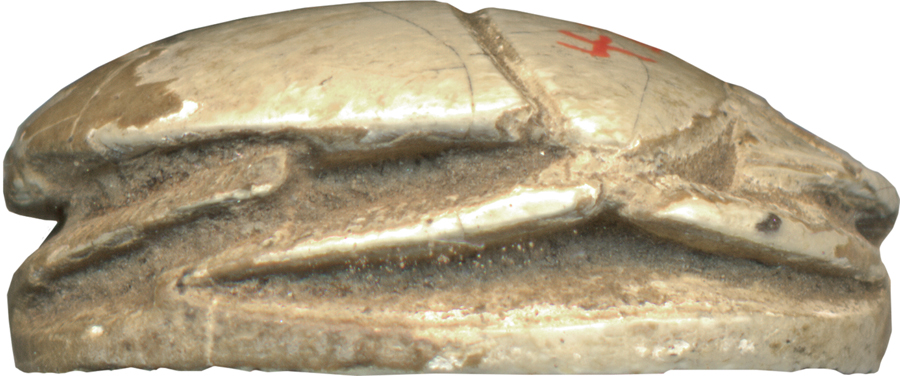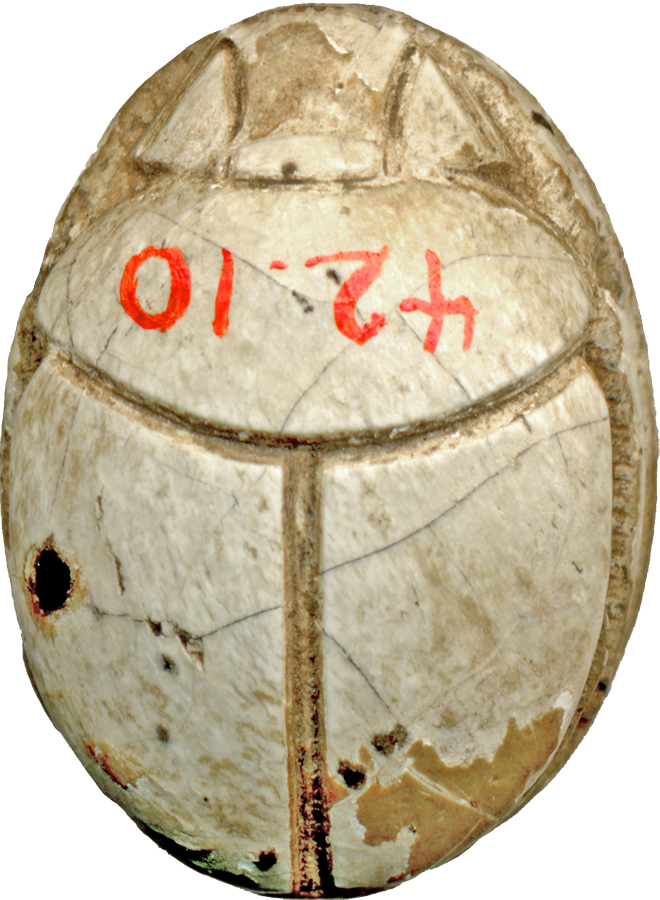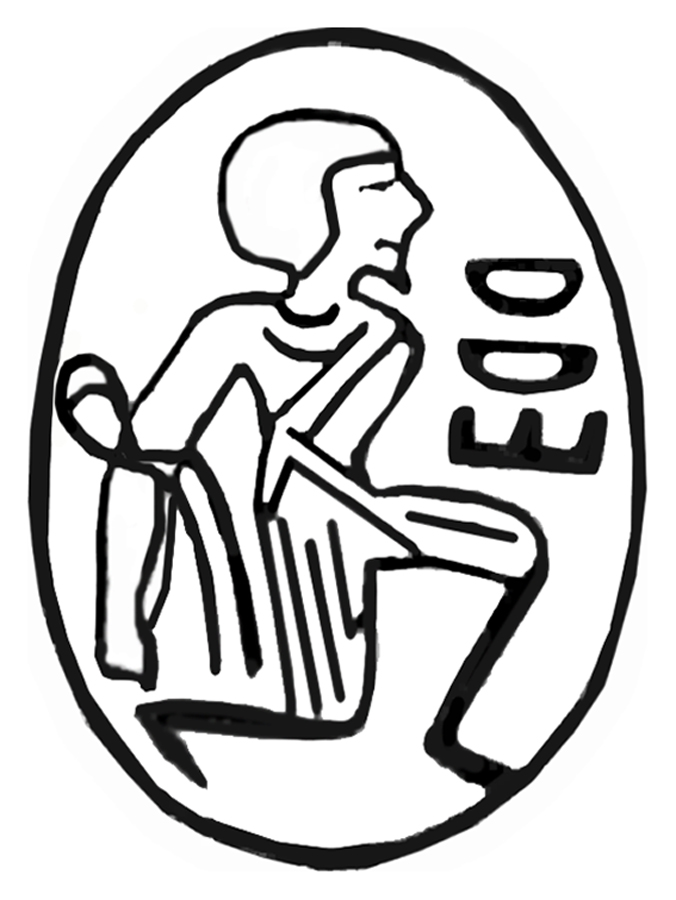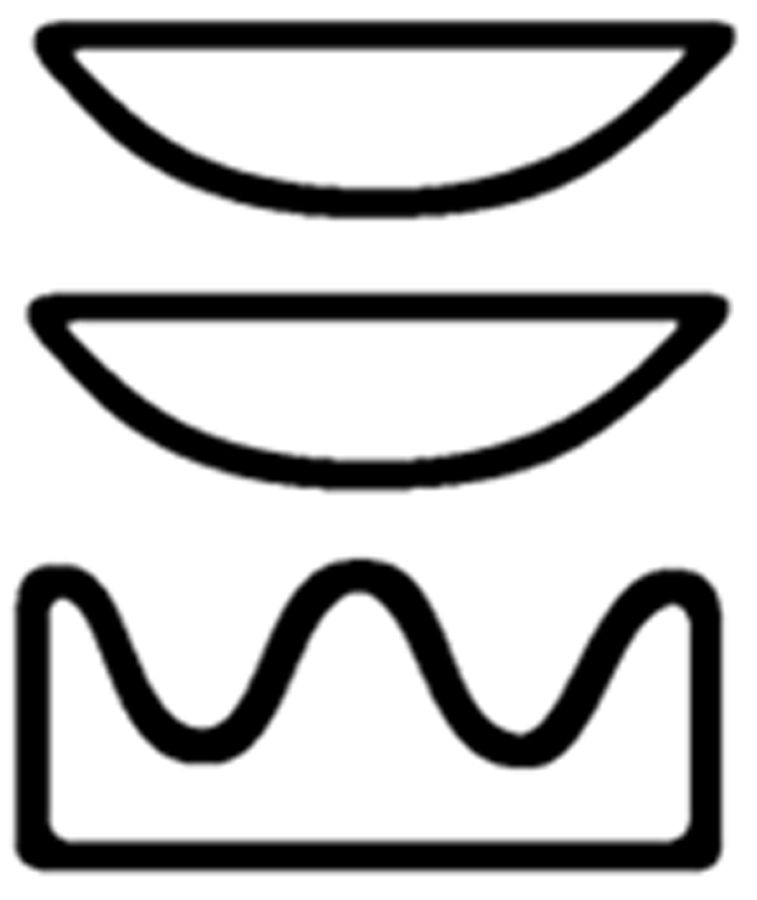Scarab with Bound Captive
(Ancient Egypt and Nubia )
This light beige steatite scarab was originally glazed blue or green. The piece is inscribed on the flat underside with an image of a captive Libyan and a short column of hieroglyphics. The top of the piece is high with a detailed incised design. The workmanship is good and the piece is carefully made.
This scarab functioned as a protective amulet and had royal connotations. It was originally mounted or threaded. The bottom motif refers to the royal control over all foreign countries and should ward off all dangers for its owner. It is imaginable that soldiers on an expedition or at the frontier used such amulets.
The image of a fettered captive is a popular motif on scarabs, however, the figure of a captive is usually subordinate to the figure of a king. In this case, there is no representation of the king, only the short inscription, which refers to him. It is possible that such an amulet should provide magical protection for Egyptians traveling abroad or for Egyptian allies. The very round base and the style of the carvings are typical for the early 18th Dynasty.
Inscription
Provenance
Provenance (from the French provenir, 'to come from/forth') is the chronology of the ownership, custody, or location of a historical object. Learn more about provenance at the Walters.
Henry Walters, Baltimore, 1911 (?) [mode of acquisition unknown]; Walters Art Museum, 1931, by bequest.
Geographies
Egypt (Place of Origin)
Measurements
H: 1/4 x W: 1/2 x L: 9/16 in. (0.7 x 1.2 x 1.5 cm)
Credit Line
Acquired by Henry Walters, 1911 (?)
Location in Museum
Not on view
Accession Number
In libraries, galleries, museums, and archives, an accession number is a unique identifier assigned to each object in the collection.
In libraries, galleries, museums, and archives, an accession number is a unique identifier assigned to each object in the collection.
42.10












